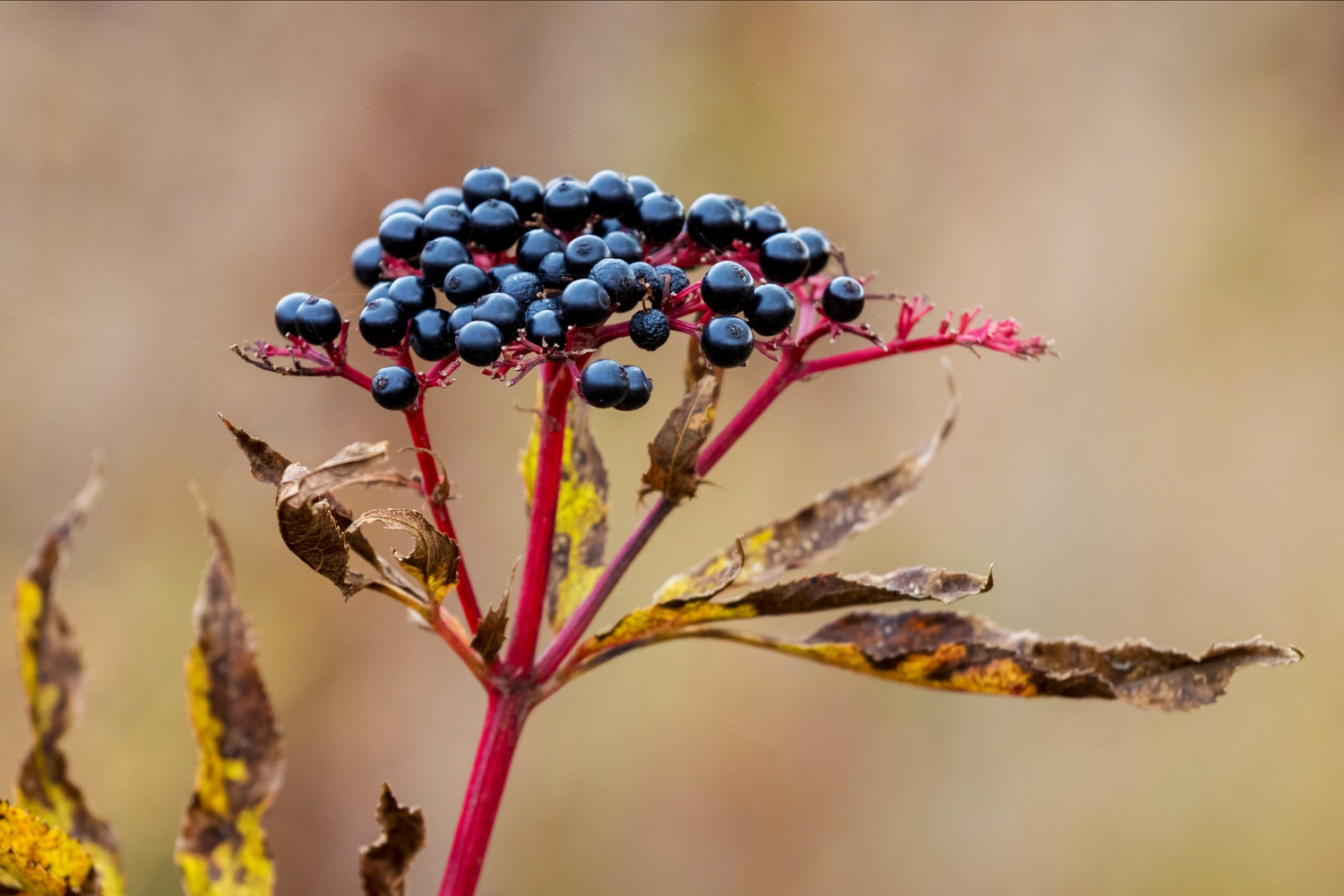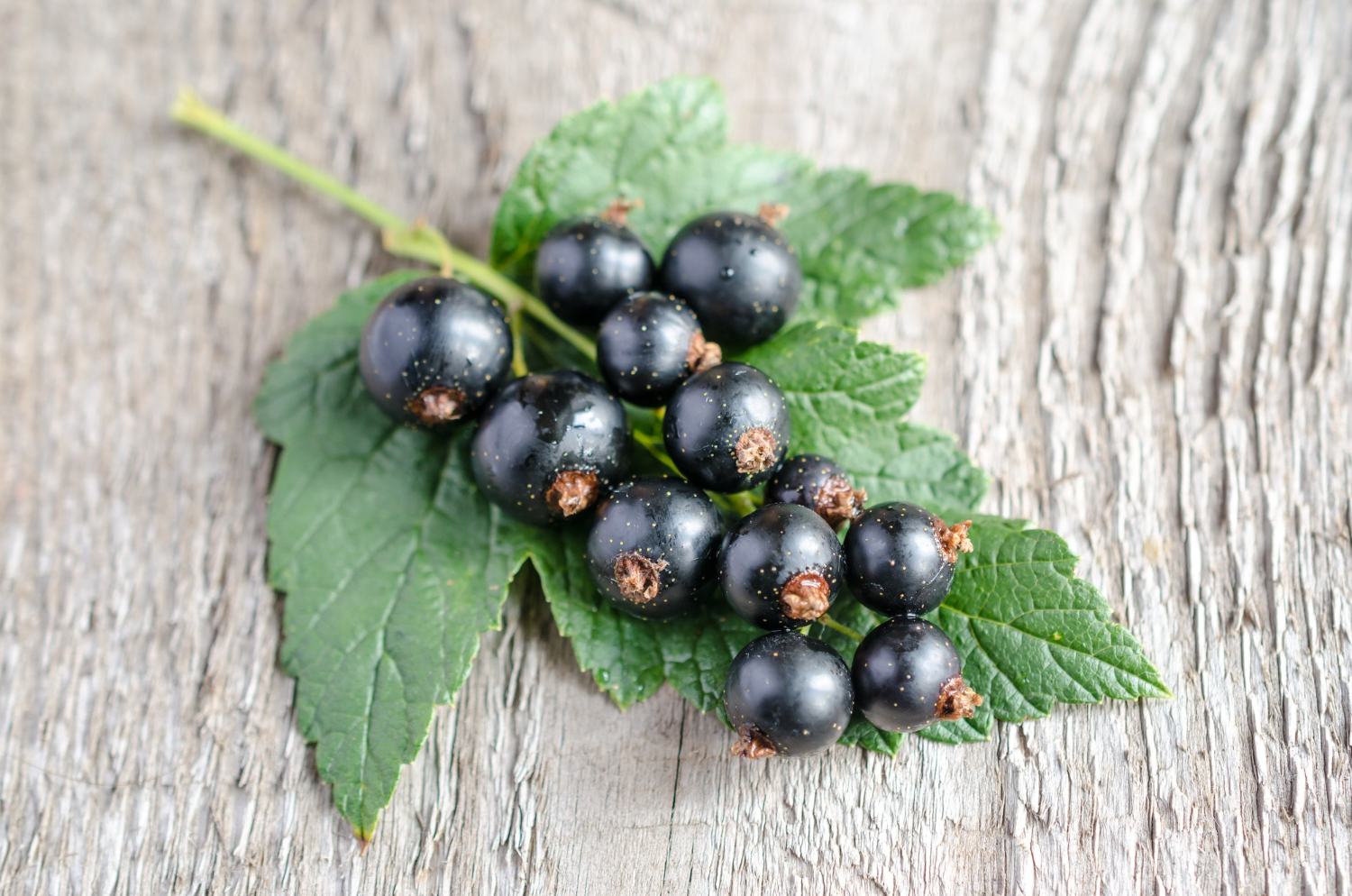Blackcurrants can be commonly found in health food stores and pharmacies in the form of juices and extracts. Other medicinal products with blackcurrant include essence oil, capsules, tablets, food supplements, and cough syrup flavor. For many years, blackcurrant raised its popularity in the form of medicinal fruit.
Unlike other fruits and berries, blackcurrants are banned in the United States, not because of its health risk but because it produces spores that wither the timber production. Another wild berry that gained its popularity in medicinal plants is elderberries, a common ingredient used by indigenous people to create traditional herb medicine.
As of this writing, elderberries and blackcurrants are still utilized in herbal plants combined with other plant species to create concoctions, tea, and herb mix. These mixtures treat illnesses from cold, indigestion, flu—up to complex ones like heart diseases.
Is Elderberry the Same as Blackcurrant?
While elderberries and blackcurrants are both “wild berries,” these two have vast differences. Elderberries are relatively more minor compared to the already small blackcurrants—it grows in clusters of elderberries. Both plant variants fall under the berry category of plants—since they rise on a flower that bears a single ovary.
Elderberries can be harvested during the autumn season, while the blackcurrant is considered a summer fruit. Popular variants of elderberries include Adams, Black Lace, Black Beauty, Johns, Nova, Variegated, and York. On the other hand, blackcurrant varieties include Ben Avon, Ben Connan, Ben Dorain, Ben Sarek, Ben Hope, Ben Sarek, Ben Lomond, Ben Tirran, Ben Hope, Ben Gairn, Big Ben, Ebony, Foxendown, Titania, and Ben Alder.
Elderberries may have colors in red and black, while blackcurrants are only available in the red variant. Both of the fruits have a lustrous exterior—but elderberries are smaller, about half of the typical length of blackcurrants. The interior of elderberries bears a magenta hue, while the blackcurrants possess a grey-black shade.
Health benefits of elderberries
Elderberry is the variants of edible berries produced by Sambucus trees, clusters of white flowers bearing black or blue-black fruits. Black elderberry, the ones cultivated in Europe, is the standard variant of this berry. In the essence of folk medicine, dried elderberries or juice are known to treat infections, influenza, headaches, and sciatica. It can also relieve pain in the teeth, heart, and nerves.
Other health benefits of elderberries are as follows:
- Elderberries are high in essential nutrients—including vitamin C, dietary fiber, and anthocyanins. These nutrients are known to strengthen one’s immunity, reduce inflammation, and helps the digestion process of the body.
- Elderberries are also an excellent source of phenolic acids, which help your body fight against oxidative stress throughout the body.
- A cup of fresh elderberries possesses 106 calories, around 30 grams of carbohydrates, and less than a gram of fat and protein. It can also give you 57% of the daily value of vitamin C and 36% of the daily value for dietary fiber.
Health benefits of blackcurrants
Blackcurrant is a shrub that produces a flavorful berry with a deep purple color. This berry is suitable for dishes like jams, marmalades, jellies, cordial, and syrups. You can also include blackcurrant sauce to complement savory dishes like wild games, fowls, beef cuts, and others. Blackcurrant has numerous variants growing from the “Ben” series—a known edible variant of the said berry.
Listed below are some of the essential profits provided by this fruit:
- Blackcurrants contain gamma-linolenic acid (GLA) and vitamin C, which are known to treat dry eyes. These compounds are also responsible for improving the eyes’ overall condition, including the eye’s nighttime adaptation, blood flow in the eye area, and reduced visual fatigue.
- Consuming supplements enriched with blackcurrants are also proven to reduce the visual field deterioration for glaucoma people.
- Drinking blackcurrants are also known to reduce plaque buildup in the arteries—reducing the risk of complications related to the heart like stroke and heart attack. It also resists the damage caused by the platelet clumping around the heart’s blood vessels.
- Blackcurrants are also known to reduce swelling, stiffness, soreness, and pain in your joints. This is because blackcurrant contains GLA, a form of acid that aids with inflammation within the body. GLA is also known to treat several conditions, including metabolic syndrome, depression, ADHD, hay fever, fatigue syndrome, diabetic nerve pain, etc.
What Does Blackcurrant Taste Like?
Incorporating blackcurrant isn’t challenging to do. It can complement savory dishes and proteins and be mixed with fresh produces such as vegetables and fruits. This fruit can be found in the form of oils, pills, powder, or dried fruit. To get the complete flavor profile of blackcurrants—it is suggested to eat it fresh. Dried blackcurrant is the second nearest option if you don’t have the new variant.
Compared to other fruits, dried blackcurrant tends to have a chewier consistency—similar to dates. This provides a more condensed flavor profile and nutrients compared to its new variant. It may also have a deep grape flavor in the end, most especially if you eat it with skin intact. The seed of this fruit can be chewy, and you can eat that together with the blackcurrant.
What Does Elderberry Taste Like?

Fresh elderberries are suggested to be eaten fresh, which provides an optimal flavor profile compared to its unripe variant. While elderberries are considered medicinal fruit, it doesn’t mean that it has an unpleasant, “bitter medicine” taste. Elderberries have a bright flavor with the right balance of tartness and earthiness on the said fruit.
This makes elderberries a complimentary fruit with other berries such as blackcurrant, cherries, strawberries, and even apples. It can provide an excellent flavor mix with apples and strawberries—but elderberries can still provide texture and taste to milder fruits like blackberries and wild grapes.
Elderberries can be consumed when it is already ripe. The indicator of this fruit is when it turned into a beautiful shade of blue, purple, or black—depending on its variant. You can enjoy the taste of elderberries on their own, or you can mix it with tea leaves, baked goods, oats, and granola, or even dried fruits.

